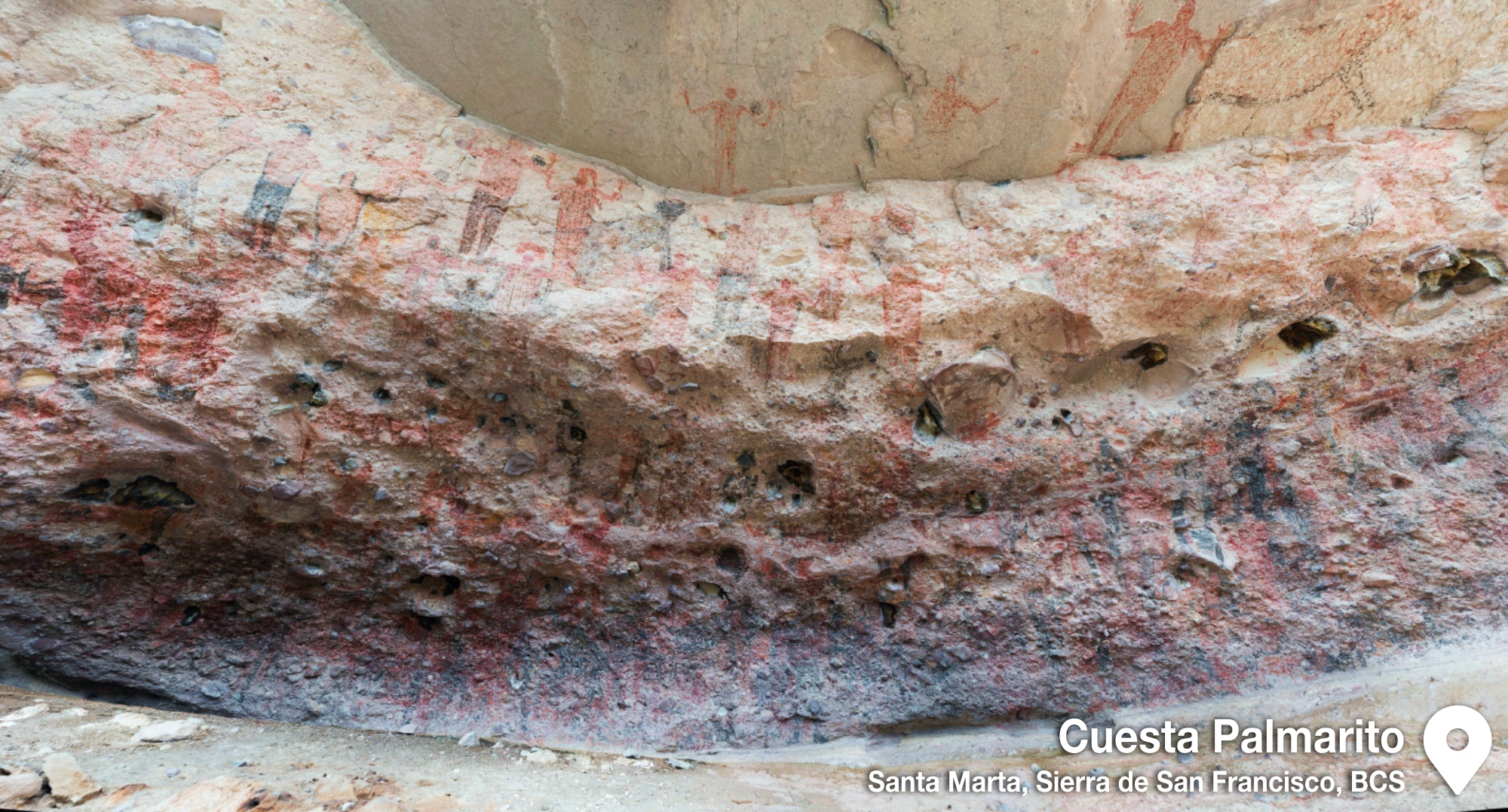CUESTA PALMARITO
Mulegé, Mulegé

La cueva Cuesta de Palmarito es uno de los sitios con pinturas rupestres que forma parte del estilo pictórico Sierra de San Francisco y se encuentra en una de las laderas que desembocan en el pequeño valle de Santa Marta, donde se encuentra la comunidad del mismo nombre. ubicado, que es desde donde se accede a este sitio. La Cuesta de Palmarito es un sitio de difícil acceso porque se encuentra en lo alto de una pendiente muy pronunciada y las figuras se ubican en su mayoría en lo alto de la pared rocosa que conforma esta cueva, que es una de las más altas de toda la zona. Todo indica que este sitio con pinturas rupestres es uno de los primeros referenciados por los misioneros, principalmente por el padre jesuita José Mariano Rothea, quien sirvió como misionero en San Ignacio, que era el establecimiento religioso más cercano a la ranchería indígena que al parecer acampó precisamente donde ahora se asienta la comunidad de Santa Marta. Este yacimiento, como muchos otros con pinturas rupestres, se ha relacionado con la existencia de varios mitos indígenas que dan cuenta del inicio de la vida y la creación de los primeros seres humanos en el mundo antiguo peninsular. Por otro lado, se ha considerado que en general las pinturas rupestres pueden estar relacionadas con la representación de los muertos, la “posesión del espíritu, el trance ” y un “vuelo ” que se lograría por diferentes medios, pero notablemente con la ingesta de plantas alucinógenas autóctonas que crecen en las montañas peninsulares. El Palmarito, o “ cueva de la Cuesta Palmarito”, como también se le llama,
******
CUESTA PALMARITO
The cave Cuesta de Palmarito is one of the sites with cave paintings that is part of the pictorial style Sierra de San Francisco and is located on one of the slopes that flow into the small valley of Santa Marta, where the community of the same name is located. located, which is where you access this site. The Cuesta de Palmarito is a site of difficult access because it is located on the top of a very steep slope and the figures are located mostly at the top of the rock wall that makes up this cave, which is one of the highest in the whole area. Everything indicates that this site with cave paintings is one of the first ones referenced by the missionaries, mainly by the Jesuit father José Mariano Rothea, who served as a missionary in San Ignacio, that it was the closest religious establishment to the indigenous ranchería that apparently encamped precisely where the community of Santa Marta is now settled. This site, like many others with cave paintings, has been linked to the existence of several indigenous myths that account for the beginning of life and the creation of the first human beings in the ancient peninsular world. On the other hand, it has been considered that in general the cave paintings can be related to the representation of the dead, the “possession of the spirit, the trance ” and a “ flight” that would be achieved by different means, but notably with the intake of native hallucinogenic plants that grow in the peninsular mountains. The Palmarito, or “cave of the Cuesta Palmarito ”, as it is also called.
Enlace Audio libro: Pinturas Rupestres Misiones y Oasis de la Baja California https://bit.ly/32CfTlw
Página web: http://sendarupestre.cultura-bcs.gob.mx/